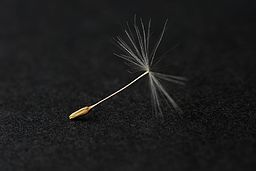Of all the adjectives I use to describe the way I move through the world, “tired” is not one I normally apply. Especially not now, not during Pesach.
Pesach is a time to celebrate the energy of a renewed natural world, a spring that has, both mysteriously and inevitably, come again. It is a time for imagining (or performing!) a dance of liberation on behalf of all sentient beings living on the planet that supports, even now, their existence.
And yet.
Yesterday, I read an article in The Chronicle of Higher Education that focused on professorial fears. Teachers nationwide are worried and frightened about missteps they cannot know they are making (and aren’t sure they’ve made). Take the sociologist who taught a seminal text by W.E.B. Du Bois in her field – a text that used the word “Negro.” That teacher was reported to her administrators. She, like all of us, is watching the walls close in on her classroom.[1]
I am a professor of Judaic Studies at a southern and public university. A new front in the culture wars of our time has opened up before our eyes; our Republican-controlled legislature recently demanded a list of all the DEI (diversity, equity, inclusion) trainings we run, information about whether said training was voluntary or mandatory, and the names of those who have attended such trainings.
My spouse and I attended a training focused on gender last December. We are on our legislators’ “little list.”[2]
At the same time that I am grieving about all of the above I grieve about what happens down below. My own reactivity is part of the mix.
The University of North Carolina Charlotte, where I work, features an administration (and a faculty body) that is predominantly white, male, and Christian. Depending on the day, I am reactive to any one of these categories.
Let’s choose a day. Last Thursday was first-day Pesach.
It was no surprise that a major meeting of an important administrative body was scheduled on first-day Pesach. Ignoring Jewish holidays has been so chronic on the part of UNCC’s administrators over my time there that it is practically their practice.
The administrators were told that they had scheduled a meeting to pass an important resolution on professorial free speech (yes, the ironies here are interesting) on a day when Jewish faculty might well be observing an important holiday. They neither named nor acknowledged what had happened. No email went out, no apology was proffered. Instead, said administrators waited until the meeting. Then, they made the meeting moot where voting on the actual resolution was concerned. Instead, they asked the faculty that could attend for permission to conduct the vote electronically.
Yes: the non-Jewish faculty delegates were asked to vote on whether to make it possible for Jewish faculty delegates to vote.
The next day, everyone in the College of Arts and Sciences received our regularly issued newsletter. It began with a colorful banner wishing everyone a “happy Easter.”
Did I mention reactivity? Did I mention feeling tired?
UNCC’s administrators are aware that there are some faculty who represent minorities. Maybe some administrators even want the diversity they claim to support. Maybe some are downright glad to have us at UNCC.
I am not convinced that they feel the need to make us feel glad we work here.
And yet.
Do I want to be one of the cacophony of voices pointing out the missteps they haven’t known they were making even when these seem very real to me? Do I want to complain yet again about the extraordinary dominance of Christian premises governing so much of the operation of a presumably secular institution?
I am tired. I am afraid. I don’t know which battles to pick because everyone everywhere around me is fighting all the time.
This Pesach, the liberation I need is one from rage and anger — even as I know that there is so much to be justifiably enraged about.
I want to know what hope looks like.
[1] I must note that conservative websites have, for years, encouraged students to report on their teachers (see Campus Reform and Turning Point USA’s Professor Watchlist).
[2] See these lyrics for reference.




